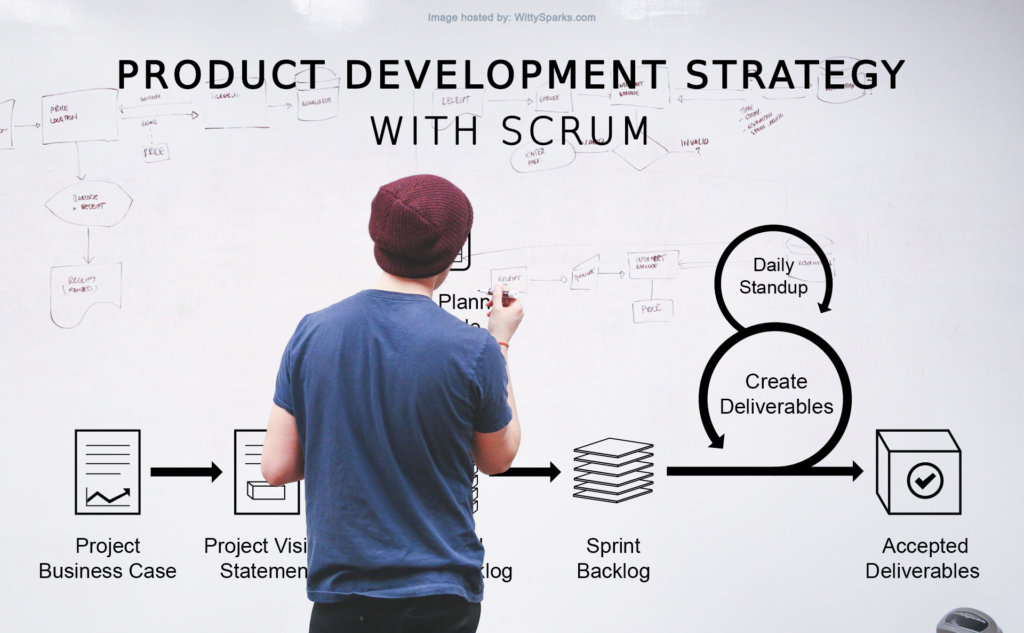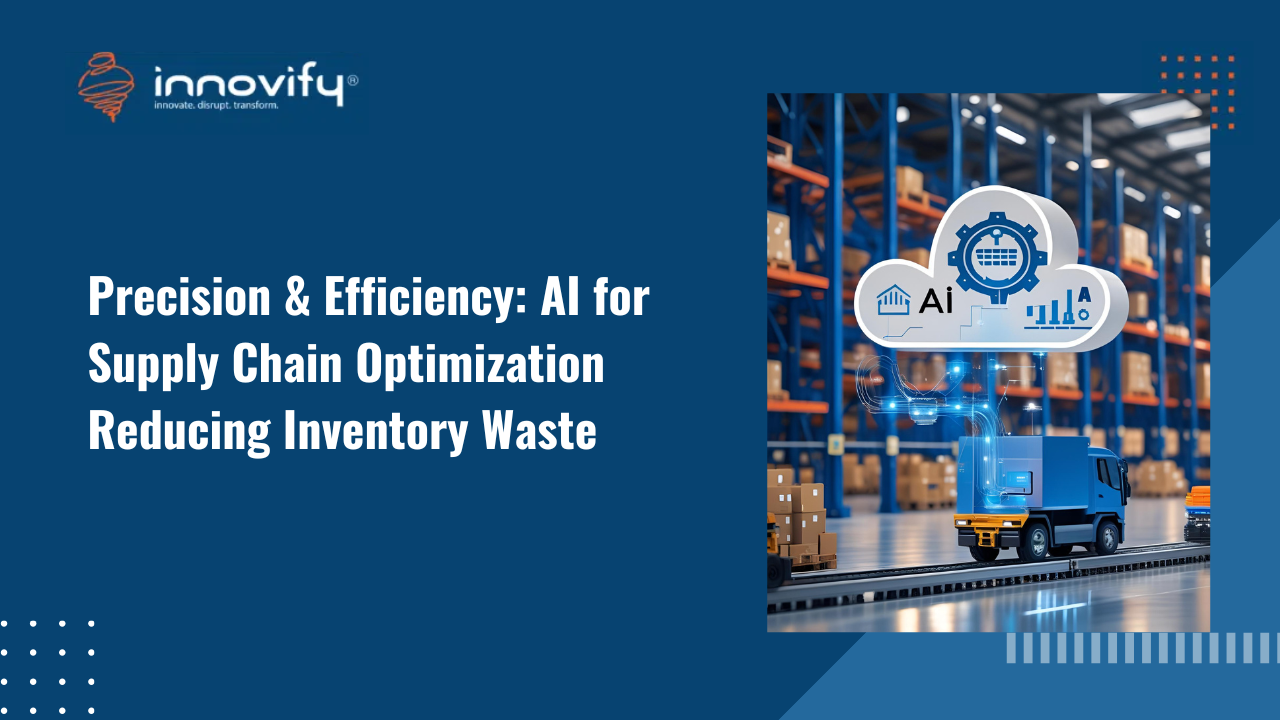Innovation
Digital Product Development: A Must-Read Guide for Success
Keeping up with the competition in today’s corporate world requires a strong focus on developing new digital products. With rising competition and fast-changing technology, companies must create creative goods that satisfy consumer wants to remain ahead. Yet, creating effective digital goods is not simple; it calls for a systematic approach informed by a thorough familiarity with the market and the target audience’s requirements. This article will serve as a complete reference to digital product creation, describing the essential processes and recommended procedures businesses should adhere to. This guide will help startups and existing companies create and launch effective digital products that delight consumers and expand companies.
What is digital product development?
Digital product development is the process of making and releasing digital products like software, mobile apps, websites, and other digital tools. It involves various stages, including ideation, design, development, testing, launch, and ongoing maintenance and updates.
Product Development vs. Feature Development
Product Development and Feature Development are two different approaches to creating and improving digital products. The goal of product development is to create new products or improve current ones to satisfy the wants and requirements of consumers. Whereas feature development focuses on adding new features to an existing product to improve its functionality or usability.
Here is a table that shows the main differences between Product Development and Feature Development:
| Product Development | Feature Development | |
|---|---|---|
| Goal | Create a new product or enhance an existing product | Add new features to an existing product |
| Focus | Customer needs and preferences | Improving functionality or usability |
| Stage | Starts with ideation and research | Starts with existing product |
| Process | Full product lifecycle from ideation to launch | Iterative process of adding new features |
| Outcome | New or improved product that meets customer needs | Improved functionality or usability of existing product |
Importance of user-centric approach in digital product development
Successful digital product development relies on developing products that fit the wants and demands of the target audience. This method puts the user at the center of digital product development framework to create an intuitive, easy-to-use, and pleasant product.
These are a few examples of why it’s critical to put the consumer first while creating digital products:
1. Better user experience
A user-centric strategy may assist in building a product with a better user experience by concentrating on user wants and preferences. This can lead to increased user satisfaction, loyalty, and retention.
2. Increased engagement
A product is more likely to attract people and maintain their interest if it is developed with their needs in mind. A user-centric approach can help identify key features and functionality that will appeal to the user and increase engagement.
3. Reduced development costs
By prioritizing the end user’s needs, a user-centered design may help reduce expenses throughout diggital product development process. This helps prioritize development and prevents wasting time and money on things users don’t care about.
4. Improved product adoption
Products developed with the consumer in mind are more likely to be utilized. A user-centric approach can help identify key user needs and pain points and develop a product that addresses those needs and pain points.
9 Challenges in Digital Product Development
Digital product development process can be a complex and challenging, and there are several key challenges that companies may face in this area. Some of the most common challenges include:
- Rapidly changing technology and market trends– This refers to the fast-paced nature of technology advancements and changing market trends that can make it challenging for digital product developers to keep up with the latest trends and developments.
- Limited resources, including budget, time, and talent – The challenges faced by companies in terms of limited resources, such as budget, time, and talent, which can affect the ability to develop and deliver digital products that meet the needs of users and keep up with market trends.
- Complex user needs and expectations – The challenge of meeting the complex needs and expectations of users, which can vary widely and require a deep understanding of user behavior and preferences.
- Difficulty in integrating with existing systems and infrastructure – The challenge of integrating new digital products with existing systems and infrastructure, which can be complex and require significant time and resources.
- Balancing innovation and practicality – The challenge of balancing innovation and practicality in digital product development process, where there may be pressure to innovate quickly while ensuring that products are reliable, functional, and meet user needs.
- Managing and prioritizing features and requirements – The challenge of managing and prioritizing the various features and requirements of digital products, which can be complex and require effective communication and collaboration between different teams.
- Addressing security and privacy concerns – The challenge of addressing security and privacy concerns in digital product development can be complex and require a deep understanding of security risks and mitigation strategies.
- Keeping up with evolving regulatory and legal
requirements – The challenge of keeping up with evolving regulatory and legal requirements in digital product development framework, can vary across different regions and industries and require ongoing monitoring and compliance efforts. - Competing with established market players and disruptive startups– The challenge of competing with established market players and disruptive startups in the digital product space, where there may be intense competition for market share and customer loyalty
6 Essential Processes for Digital Product Development Success
1. Idea generation and validation
The first step in digital product development process is idea generation and validation. This step is important because it sets up the product development process. Idea generation involves brainstorming, researching, and identifying potential ideas to develop into a digital product. Once the idea has been generated, it is important to validate it to ensure it is feasible, viable, and desirable.
Feasibility:
Feasibility refers to the technical feasibility of the idea. This involves determining whether the idea can be developed using technology, resources, and expertise. The team must assess whether they have the necessary technical skills and infrastructure to develop the product. They must also consider whether legal or regulatory barriers could prevent them from bringing the product to market.
Viability:
Viability refers to the financial viability of the idea. This involves determining whether the product will be profitable and generate sufficient revenue to cover the development costs and provide a return on investment. The team must consider the potential market size, competition, pricing strategy, and revenue streams.
Desirability:
Desirability refers to the desirability of a concept to the user. This involves analyzing if the product meets the requirements and preferences of the intended market. The team needs to conduct user research and gather feedback to understand the user’s pain points, preferences, and behaviors. They must also consider whether the product aligns with the company’s mission and values.
Once the idea has been validated, the team can move forward with the digital product development framework, confident that the idea will succeed.
2. Product strategy and roadmap development
Product strategy and roadmap development are crucial in developing digital products, where companies define the project’s goals, objectives, and timeline. This involves identifying the product’s features, functionality, and user experience, estimating the resources and budget required for development, and creating a roadmap that outlines the product’s development stages.
By developing a clear product strategy and roadmap, companies can ensure that the project stays on track, meets the desired objectives, and stays within the allocated budget and timeline.
3. User experience design and prototyping
Digital product development process involves user experience (UX) design and prototyping. UX design is designing the user interface (UI) of a digital product to create an intuitive and enjoyable experience for users. It involves several types of design, such as
- Information architecture,
- Wireframing,
- Visual design
- Interaction design,
- Prototyping.
UX design and prototyping are critical steps in digital product development, as they define how users interact with the product and play a key role in its success.
4. Agile development and continuous improvement
Digital product development framework involve adopting an agile development methodology and continuous improvement approach. This means breaking down the product development process into smaller iterations or sprints and testing and refining the product at each stage to ensure it meets user needs and preferences.
The agile approach emphasizes collaboration, flexibility, and adaptability, allowing teams to respond quickly to changes in the market or user feedback.
By adopting an agile development approach, companies can ensure that their digital products are continuously improved and refined to meet the evolving needs of their target audience.
5. Testing and quality assurance
Testing and quality assurance are critical steps in the digital product development process to ensure that the product meets the required performance, functionality, and usability standards. This step entails rigorous testing of the product for bugs, glitches, and errors, as well as user testing to collect feedback and identify improvement opportunities.
During the testing phase, developers typically use a range of testing methodologies to identify and address any issues with the product. These may include functional testing, performance testing, security testing, and user acceptance testing (UAT).
- Functional testing involves testing the individual features and functions of the product to ensure they work as intended.
- Performance testing involves testing the product’s speed, scalability, and reliability under different conditions.
- Security testing involves testing the product’s security features to ensure it is protected against potential threats.
- UAT consists in testing the product with real users to gather feedback on its usability and functionality.
Once testing is complete, the development team will typically address any identified issues and make necessary improvements to the product. This may involve fixing bugs or glitches, improving performance or usability, or adding new features or functionality.
Quality assurance (QA) is also critical to digital product development. QA ensures that the product meets the required quality and functionality standards and is free from defects or errors. This involves conducting various quality checks throughout development, including code reviews, unit testing, and integration testing. QA also ensures that the product meets regulatory and compliance standards, such as data privacy laws and accessibility requirements.
6. Launch and post-launch evaluation
This final step requires monitoring user engagement and feedback, analyzing key performance indicators (KPIs), and making adjustments to the product as needed to ensure its ongoing success. It is crucial to evaluate the success of the product post-launch to identify areas for improvement and ensure it continues to meet customers’ needs. Companies can maintain a competitive edge and drive business growth by continuously evaluating and improving their product.
6 Tools and Resources for Digital Product Development
Digital product development requires various tools and resources to facilitate the development process and ensure the product’s successful launch. Here are some essential tools and resources for digital product development:
1. Project management and collaboration tools
Project management tools help teams collaborate and manage the project efficiently, ensuring everyone is aligned and working towards the same goals. Popular project management tools include Trello, Asana, and Jira.
2. Design and prototyping tools
Design and prototyping tools are essential for developing the user interface and experience of the product. Some popular design and prototyping tools include Sketch, Figma, and Adobe XD.
3. Development frameworks and platforms
These tools facilitate the development process by providing pre-built components and libraries that can be used to speed up development time. Some popular development frameworks and platforms include React, Angular, and Vue.
4. Testing and analytics tools
Testing and analytics tools help developers test the product for bugs and glitches and measure the product’s performance. Some widespread testing and analytics tools include Google Analytics, Mixpanel, and Firebase.
5. Cloud infrastructure and hosting
Cloud infrastructure and hosting services provide scalable and reliable hosting for digital products. Widespread cloud infrastructure and hosting services include Amazon Web Services (AWS), Microsoft Azure, and Google Cloud Platform.
6. User feedback and research tools
These tools are essential for collecting feedback from users and conducting research better to understand the needs and preferences of your target audience. Some popular user feedback and research tools include SurveyMonkey, UserTesting, and Qualtrics.
Start Your Digital Product Development Journey Today
In today’s extremely competitive industry; digital product creation is important to the success of any firm. By following the main processes and best practices mentioned in this guide, firms can produce unique digital solutions that satisfy the demands and preferences of their consumers. We encourage businesses to prioritize digital product development as a key component of their growth strategies and to leverage the tools and resources available to streamline the process. Don’t wait any longer; start your digital product development journey today and stay ahead of the curve!
Frequently Asked Questions (FAQs)
Q1: Why is a user-centric approach important in digital product development process?
A user-centric approach is essential in digital product development process because it helps create intuitive, easy-to-use, and appealing products. By prioritizing the end user’s needs, a user-centered design may help reduce expenses throughout product development and ensure improved product adoption.
Q2: How can user testing help improve digital product development?
User testing can help developers better understand how users interact with their product, identify areas for improvement, and ensure that the product meets the needs and expectations of its target audience.
Q3: What is the role of data in digital product development?
Data plays a critical role in digital product development, as it can help developers better understand user behavior, identify areas for improvement, and make data-driven decisions throughout the development process.
Q4: What are some best practices for digital product development?
Some best practices for digital product development include conducting thorough research and user testing, using agile development methodologies, focusing on user experience and usability, and continually iterating and improving the product based on user feedback.
Q5: What are the phases of digital product development framework?
The phases of digital product development framework typically include ideation, planning, design, development, testing, launch, and post-launch maintenance and optimization. These phases may vary depending on the specific product being developed and the development methodology being used.
Q6: What are the 4 categories of digital products?
The 4 categories of digital products are a software as a service (SaaS), platform as a service (PaaS), infrastructure as a service (IaaS), and data as a service (DaaS). SaaS products are software applications delivered online and accessed through a web browser. PaaS products enable developers to build, test, and deploy applications in the cloud. IaaS products provide infrastructure resources such as servers, storage, and networking over the internet. DaaS products provide access to data and data-related services over the internet.




